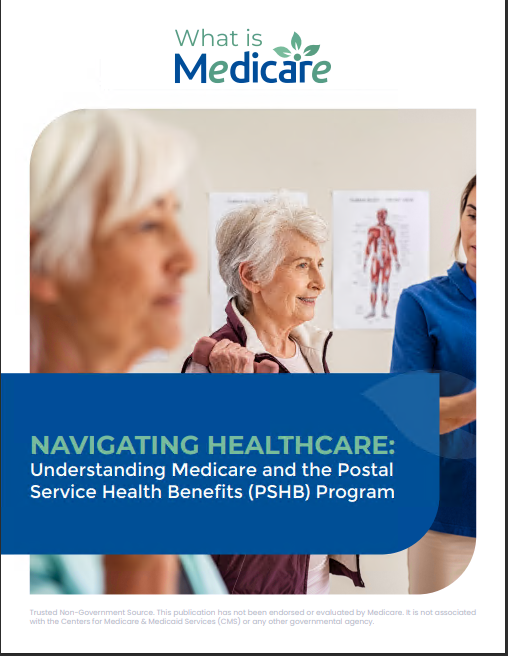Key Takeaways
-
Understanding the different parts of Medicare can help you choose the coverage that best suits your healthcare needs.
-
Each part of Medicare works together to create a comprehensive healthcare system, but knowing their specifics is key to maximizing benefits.
Breaking Down the Basics of Medicare
When you hear about Medicare, you might feel overwhelmed by terms like Part A, Part B, Part C, and Part D. But don’t worry—it’s not as complicated as it seems once you get the hang of it. Medicare is designed to provide healthcare coverage to individuals aged 65 and older, as well as younger people with certain disabilities. Here, we’ll explore how each part works and how they fit together to cover your healthcare needs.
Medicare Part A: The Foundation of Hospital Coverage
Medicare Part A, also known as Hospital Insurance, is where it all starts. This part helps cover inpatient hospital stays, skilled nursing facility care, hospice, and some home health services. If you’ve worked and paid Medicare taxes for at least 10 years (40 quarters), you likely won’t pay a monthly premium for Part A. However, it’s important to note that deductibles and coinsurance apply.
-
What it covers: Hospital stays, skilled nursing care, hospice, and some home health services.
-
What you’ll pay: In 2025, the inpatient deductible is $1,676 per benefit period.
Medicare Part B: Your Day-to-Day Medical Needs
Part B, or Medical Insurance, covers outpatient care, doctor visits, preventive services, and durable medical equipment. Unlike Part A, most people pay a monthly premium for Part B, which in 2025 is $185. Additionally, you’ll face a yearly deductible of $257 before Part B starts paying its share.
-
What it covers: Doctor visits, outpatient procedures, lab tests, and preventive services.
-
Costs to consider: Monthly premiums, annual deductibles, and coinsurance (typically 20% of Medicare-approved amounts).
How Parts A and B Work Together
Together, Parts A and B form what’s known as Original Medicare. This combination gives you broad coverage for both inpatient and outpatient care. However, it doesn’t cover everything, like prescription drugs or routine dental and vision care. That’s where additional parts of Medicare come into play.
Medicare Part C: The All-in-One Alternative
Medicare Part C, also known as Medicare Advantage, is offered by private insurance companies approved by Medicare. These plans bundle the coverage of Parts A and B and often include additional benefits like prescription drugs, dental, vision, and wellness programs. It’s a way to simplify your coverage under one plan, but it may come with specific provider networks and additional costs.
-
What it covers: Everything in Parts A and B, often with extra benefits.
-
What to know: Plans vary, so it’s crucial to review their offerings to ensure they meet your needs.
Medicare Part D: Prescription Drug Coverage
Part D is your go-to for prescription drug coverage. This part is optional and offered by private insurers. While Part A and B don’t generally include prescription drugs, Part D ensures you have access to the medications you need. In 2025, there’s a $2,000 cap on out-of-pocket costs for prescription drugs, which brings financial relief to many beneficiaries.
-
What it covers: Most prescription drugs, including generic and brand-name medications.
-
Costs to consider: Monthly premiums, deductibles, and copayments.
Supplementing Medicare: Medigap Plans
Even with Parts A and B, you might find that gaps in coverage exist. Medigap, or Medicare Supplement Insurance, is designed to fill these gaps, covering costs like deductibles, coinsurance, and copayments. Medigap is only available if you’re enrolled in Original Medicare, not Medicare Advantage. It’s worth exploring if you’re worried about unexpected out-of-pocket expenses.
-
What it covers: Out-of-pocket costs not covered by Parts A and B.
-
What to know: You’ll pay an additional premium for Medigap coverage.
Coordinating Medicare with Other Insurance
If you’re still working or have coverage through a spouse’s employer, you might wonder how Medicare fits in. Generally, employer coverage pays first, and Medicare acts as secondary insurance. It’s important to understand how these plans work together to avoid coverage gaps or penalties.
-
Primary vs. secondary payer: Employer insurance pays first if the company has 20 or more employees.
-
When Medicare pays first: For smaller companies or retiree insurance, Medicare is the primary payer.
Important Enrollment Periods to Keep in Mind
Timing is everything when it comes to Medicare. Missing key enrollment periods can lead to penalties or gaps in coverage. Here are the main periods to watch:
-
Initial Enrollment Period (IEP): A seven-month window starting three months before your 65th birthday month and ending three months after.
-
General Enrollment Period (GEP): January 1 to March 31 each year for those who missed their IEP.
-
Annual Enrollment Period (AEP): October 15 to December 7 for making changes to your Medicare Advantage or Part D plans.
-
Special Enrollment Periods (SEP): Triggered by life events like moving or losing employer coverage.
Maximizing Your Medicare Benefits
Once you’re enrolled, staying on top of your benefits can save you money and ensure you’re fully covered. Here are some tips to get the most out of Medicare:
-
Take advantage of preventive services: Many screenings and vaccines are covered at no additional cost.
-
Review your coverage annually: Plans and needs change, so check your options during the AEP.
-
Coordinate with other insurance: Ensure all your healthcare costs are properly billed.
Why It Matters
Understanding how Medicare works isn’t just about avoiding penalties or saving money. It’s about ensuring you have the healthcare coverage you need to live comfortably and securely. Whether it’s hospital stays, doctor visits, prescription drugs, or extra benefits, Medicare offers a way to tailor coverage to your unique situation.
Making Sense of Medicare for Your Future
Medicare is more than just a government program; it’s a lifeline for millions of Americans. By understanding how the parts of Medicare work together, you can make informed decisions that protect your health and your wallet. Take the time to explore your options, ask questions, and enroll with confidence.










